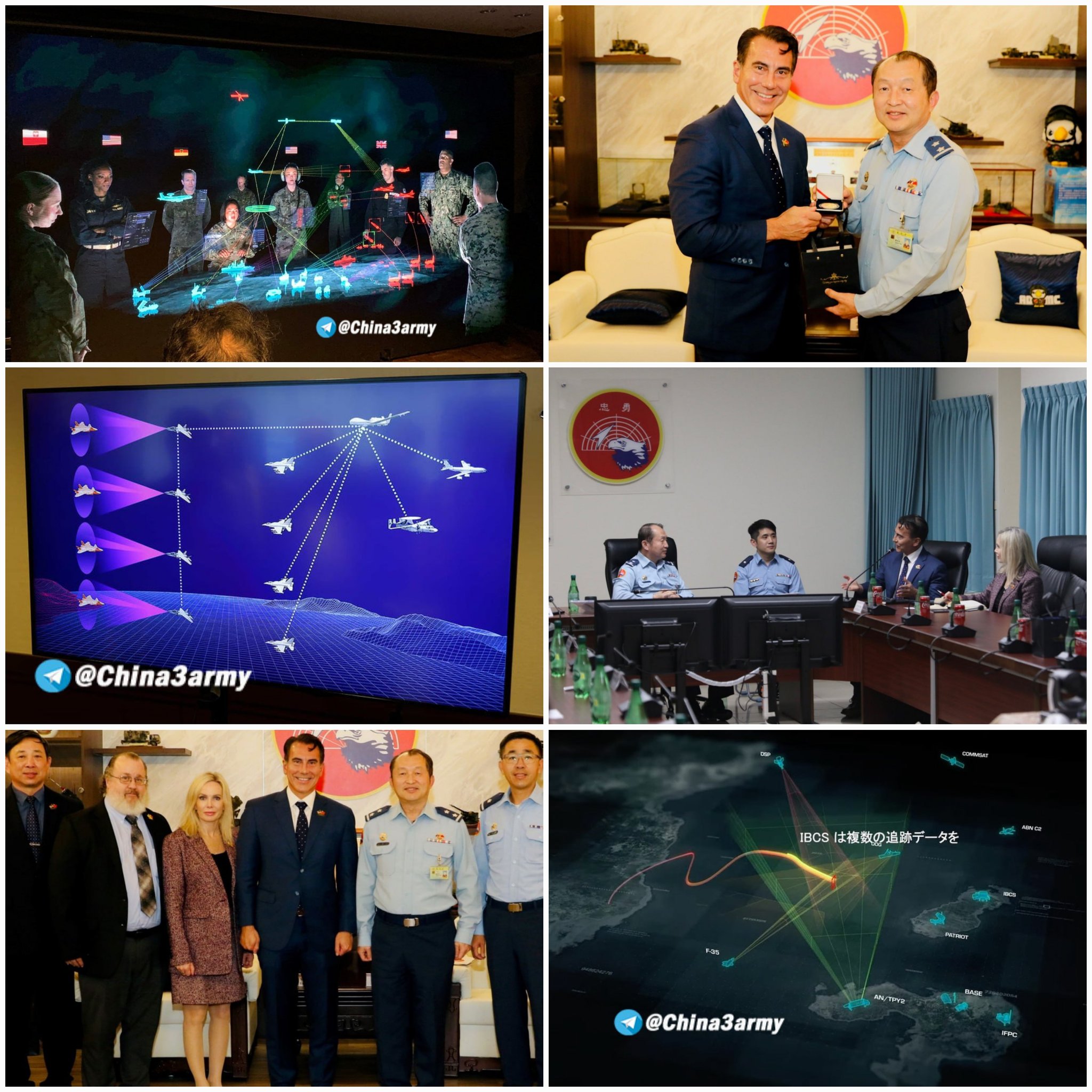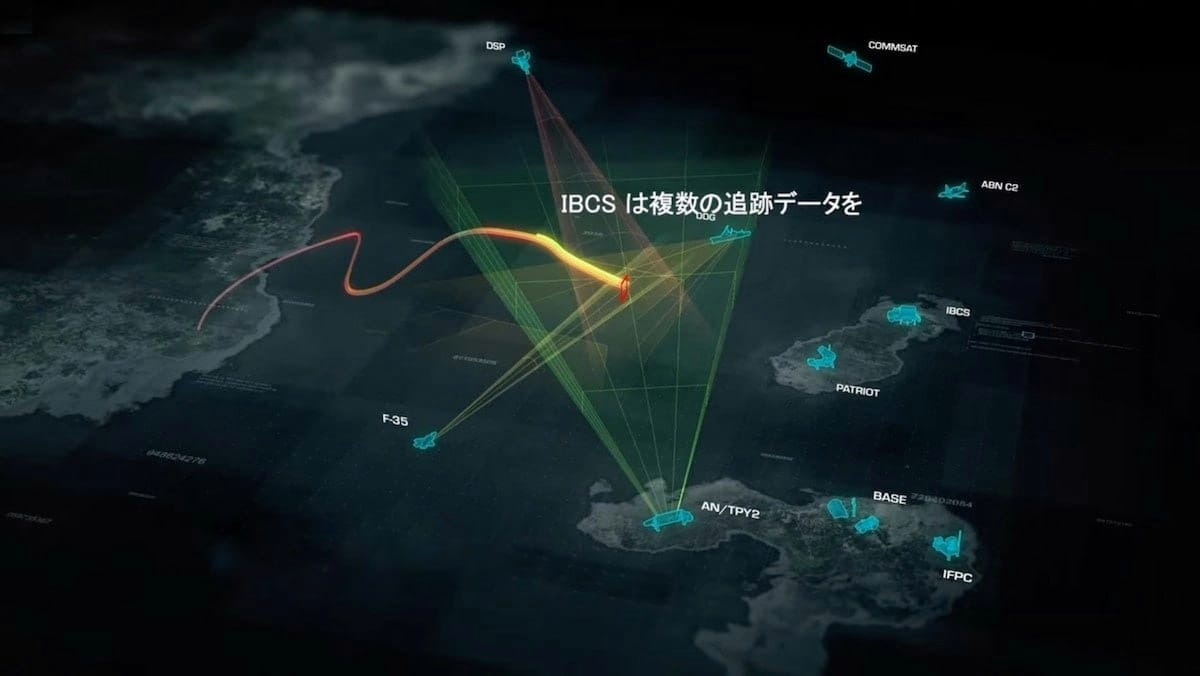Taiwan is reportedly eyeing the integration of advanced defense technology from the United States that will allow it to quickly see and act on real-time data from the battlefield as it continues to face growing military pressure from China.
According to reports, the island nation recently participated in a presentation of the United States’ cutting-edge Integrated Battle Command System (IBCS).
The report said that Sean McLay, director of business development at Northrop Grumman, disclosed the news on LinkedIn last week, revealing that he had presented the company’s vision for a connected battlespace to Taiwanese military officials.
McLay specifically discussed the IBCS, a highly sophisticated air and missile defense system designed to integrate previously incompatible sensors and weapons into a single command and control framework.
This innovation allows operators to act on data from the battlefield in real-time to enable faster and more efficient decision-making.

Lieutenant General Liu Hsiao-tang, chief of Taiwan’s Air Force Air Defense and Missile Command, was reportedly engaged in a “productive discussion” with Northrop Grumman representatives. The discussion highlights Taiwan’s interest in leveraging such advanced systems to strengthen its defense capabilities.
While details of the location and timing of the presentation remain unclear, McLay’s post pointed out that these discussions were only the beginning of what is hoped to be a long-term partnership to bolster Taiwan’s military readiness.
Taiwan’s pursuit of such advanced military systems comes at a time of escalating tension with Beijing.
China has long claimed Taiwan as part of its territory despite the island’s self-governance and its security partnership with the US. Beijing has repeatedly warned that it “reserves all options” in addressing Taiwan’s status, including the potential use of military force.
The United States, in line with its One China policy and the Taiwan Relations Act, is legally obligated to provide Taiwan with defensive arms and maintain the ability to resist any attempt to alter the status quo across the Taiwan Strait through force.
The IBCS could play a role in ensuring that Taiwan remains well-equipped to defend itself against any military threats from its increasingly assertive neighbor.
Integrated Battle Command System (IBCS)
Northrop Grumman highlights that the IBCS (Integrated Air and Missile Defense Battle Command System) provides warfighters with an enhanced view of the battlespace, enabling swift and decisive actions.
The system is transforming how US and allied forces, including Taiwan, integrate across all domains, offering advanced capabilities for the warfighter.
IBCS consists of three main components: the Integrated Collaborative Environment (ICE), the Engagement Operation Center (EOC), and the Integrated Fire Control Network (IFCN) Relay. The ICE is a modular shelter that facilitates collaborative mission command on the battlefield.
The EOC is an integrated fire control center responsible for managing the engagement operations within IBCS. The IFCN Relay serves a dual purpose: it interfaces with adapted sensors and weapons while also acting as a communication relay to extend operational range.
In April 2024, the US Army received its first full delivery of IBCS. This system combines a command shelter, a fire control center, and a relay for sensors, weapons, and communications.

Late last year, IBCS further demonstrated its versatility by successfully integrating with the US Army’s emerging Indirect Fire Protection Capability (IFPC) system.
The IFPC, a ground-based weapon system, is designed to protect critical assets such as command centers and airfields, a capability that could be critical for US allies like Taiwan in the face of potential threats from China.
IBCS also addresses evolving threats like drones and hypersonic missiles through the “any sensor, best shooter” strategy, which guarantees that the most appropriate weapon is selected for each threat within a unified network.
This is particularly relevant given China’s growing military capabilities, including its development of hypersonic weapons and advanced drones.
Taiwan operates the US-made Patriot missile defense system, which plays a critical role in defending against a wide range of airborne threats.

The integration of IBCS with Taiwan’s Patriot system would improve its defense capabilities, allowing for better interoperability with other sensors and weapons.
This synergy would strengthen Taiwan’s ability to counter both conventional and emerging threats, such as China’s expanding missile arsenal, drones, and advanced aircraft.
IBCS introduces a network-enabled, Modular Open System Approach (MOSA) to command-and-control architecture. It separates command and control from sensors and launchers, integrating them into an efficient fire-control network by modularizing systems like Patriot.
This architecture enables IBCS to connect various sensors and effectors across domains—ground, air, maritime, and space—forming a cohesive air picture that can identify and track all inbound threats, including those posed by China’s expanding military arsenal.
- Contact the author at ashishmichel(at)gmail.com
- Follow EurAsian Times on Google News




